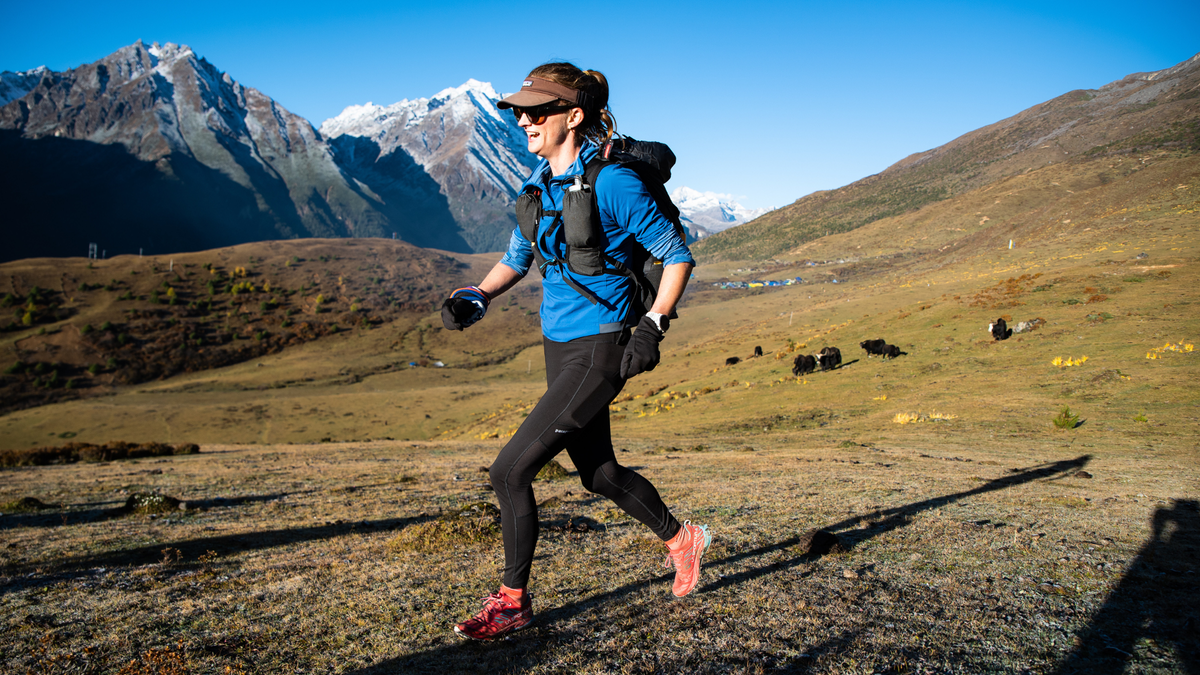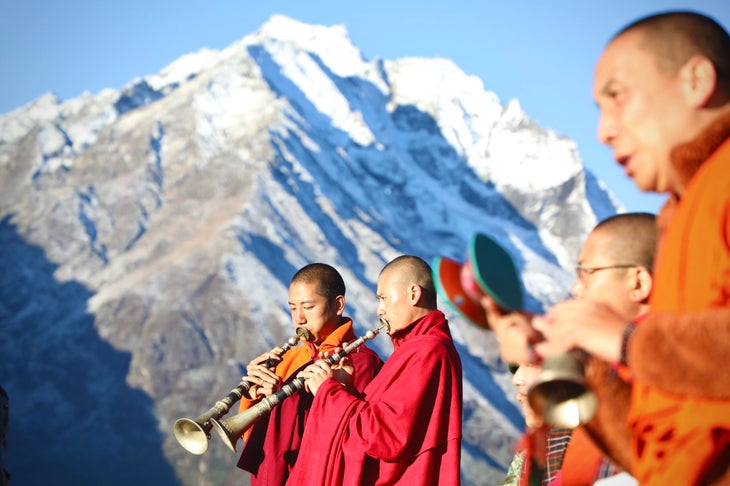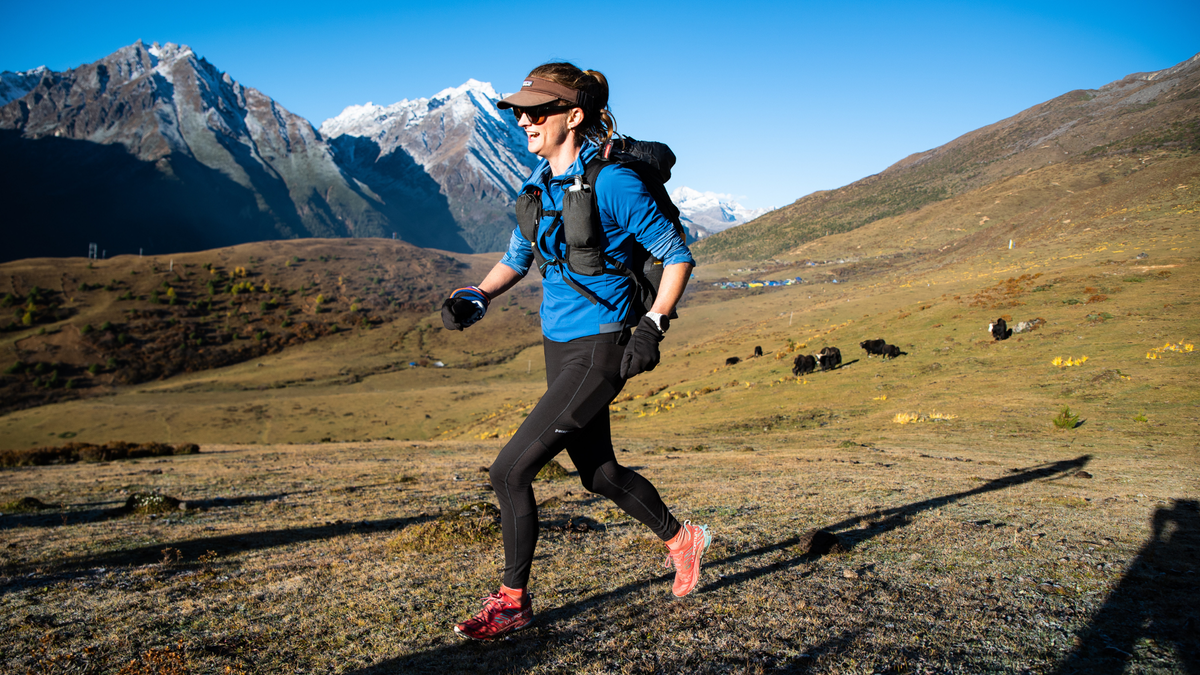
It was 5:30 A.M., pitch dark, 15 degrees Fahrenheit, and day three of the Snowman Race. We were camped in a village in the Lunana Valley in northern Bhutan, just a stone’s throw below the Tibetan border in the heart of the Eastern Himalayas.
“How’re we feeling?” I asked fellow runners in the dining tent over a breakfast of fried rice, eggs, pancakes, and sausage.
“Haha ha haaa!” roared Pascal Egli, an acclaimed Swiss mountain runner and glaciologist with tired bags under his mahogany eyes.
Privately, Pascal was worried about his injury-riddled knees. He wasn’t sure he could finish the five-day race, and he was anxious about putting any staff in jeopardy. This wasn’t just another trail race where you could drop out at the next aid station. The nearest road was a five-day walk away. The only escape option: a helicopter rescue about 6 miles into the day’s 23-mile stage with 6,500 feet of climbing. He was considering it.

“I think it will be very tough,” said Leki, a Bhutanese runner and forager from Laya, the village where the race started. We were all nervous about Gophu La Pass, which topped out at 17,896 feet. “The trail will be rocky and with ice. I think today will be the most challenging,” he nodded.
Bucking the trend, I was feeling optimistic about the day. The forecast was sunny and I believed—OK, I hoped—that today’s stage wouldn’t wreck me as badly as the first two, which I’d finished much slower than anyone anticipated. I thought maybe I was finally adjusting to the altitude and might be able to run today.
On the start line, the 16 of us racers laughed like giddy kids about to go to recess. “Also don’t die!” Luke Nelson, a runner and physician’s assistant from Pocatello, Idaho, yelled.
Little did I know I wouldn’t smile like that for a long time.
At His Majesty’s Invitation
The Snowman Race is a 110-mile, five-day stage race that follows a historic trekking route through the Bhutanese Himalayas. It’s a vision of His Majesty, the ever-popular, 44-year-old king of Bhutan, Jigme Khesar Namgyel Wangchuck, who believes trail runners are the ideal witnesses to share the impacts of our warming planet—specifically Bhutan’s melting glaciers—with the wider world.
I honestly didn’t believe Luke when he told me His Majesty came up with this idea: a mountainous stage race doubling as a climate change publicity stunt. I mean, let’s be real, trail running is a niche sport, at best. Why us? Wouldn’t it be easier to ask an NBA player to tweet something about melting glaciers?
“No. His Majesty specifically said trail runners are best suited to see the impacts,” Luke said, adding something about how I’d be a moron to miss out on this invitation. Known for prioritizing “gross national happiness” over gross domestic product, Bhutan opened its borders to visitors in 1974. The country limits tourists in an effort to preserve a landscape that remains so untouched, you can only see the glaciers by trekking for days on foot. In addition to the seven Bhutanese runners, the government would sponsor the nine foreigners invited to the race this year, waving the $150 per day tourist visas. We’d just pay for our flights and voluntary carbon offsets.
“Trail running is a niche sport, at best. Why us? Wouldn’t it be easier to ask an NBA player to tweet something about melting glaciers?”
I received the invitation in August, and the race was slated for October. I chewed it over for a few days. I despise being cold. I’d never done a stage race before. I feared my year-long back injury flaring up. I’d need my advisor’s permission to miss a month of school.
But, this was a climate change race! Since winning the Leadville 100 in 2016 and helping to start the trail running chapter of Protect Our Winters shortly after, I’ve spent my running career combining racing with environmental advocacy. Could a race halfway around the world actually serve as environmental advocacy?
Curious, honored, supported by my advisor, and just scared enough, I said yes.
🏠 Keep Your Training Base Clean
Long training runs mean muddy gear and dirty floors. Spend more time training and less time cleaning with automated cleaning solutions.


Leave a Reply